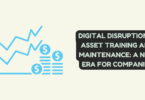drive traffic to your new website
You’ve just launched a new website that you’ve spent months developing. But, after a few weeks of it being live, you notice only a handful of site visitors.
Why?
The reason is that it takes time for a new website to be found by search engines, get indexed, and then start to rank high enough in results to drive organic traffic.
In fact, the majority of traffic to a new website tends to come away from search engines, from the likes of social media or offline PR.
If you’ve just launched a new website and aren’t seeing the types of traffic levels you need, or are about to launch a brand new business and don’t want to face the same issues, then here are some ways in which you can drive traffic to your new website.
Paid search
The fastest easy to drive primed-to-buy traffic into your new website is through paid search.
Google AdWords and Bing Advertising are two of the most popular self-serve ad platforms on the planet and enable businesses to pay for clicks to their website.
If you have the budget available then this is a fantastic way to get initial visits to your website – as many as you can afford.
The reason most new businesses won’t use AdWords though is the cost. With a 3% target conversion rate, you may need to spend upwards of £50-100 to start driving sales. For some businesses in the early days, this isn’t profitable enough to rely on as the single source of traffic and conversions.
Social media
There are three ways you can approach social media.
First is to invest in amazing organic content that you hope may become viral. For some platforms like TikTok where authentic content is king, that capital investment can be small – so long as your creativity is on point!
The second is to work with the influencers that your potential customers are following and engaging with. This can be expensive but a great way to gain quick sway in a niche.
And third, is to pay to get in front of potential customers through ads. The likes of Facebook and TikTok ads are an extremely powerful way to drive traffic. However, the same calculation that you have with paid search needs to be factored in. Are your margins large enough that you can swallow a potentially high cost-per-acquisition?
SEO
For most websites, the holy grail of digital marketing is to achieve and sustain a top-3 ranking in Google.
Search engine optimisation is a proven but time-costly collection of strategies designed to rank a website higher in Google and other search engines organic. That means no paying per click, but ‘free’ traffic.
Why is ‘free’ in quotation marks? Because getting a brand new website ranking in Google takes time, expertise and budget.
Unless you’re an SEO guru yourself, then the best way to start generating quick results is to work with a specialist SEO consultancy. But a budget is needed too. The best links required to start building a new website’s domain authority often come off the back of blogger partnership campaigns or digital PR.
Of all the digital channels available, SEO takes the longest to achieve and is arguably the hardest to master. But get it right, and your website can enjoy an almost endless stream of relevant website traffic into the future.
Other avenues to explore
The three points above aren’t the only avenues you can look to drive those first clicks to your website.
If you already have a large email marketing database then that would be a great place to start.
Have a knack for PR or great industry contacts? Then digital press releases (or even traditional PR) can be great too – so long as you have the budgets to support a campaign.
There are other channels to explore too. Affiliate marketing where you only pay for results, guest blogging to gain industry awareness, and working with bloggers themselves to drive some brand notoriety and backlinks are good additional avenues to explore.






